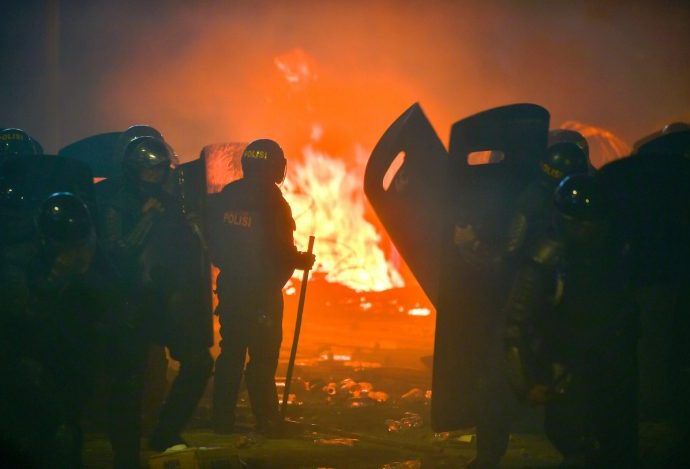Implications of Tucker Carlson’s tête-à -tête with Putin – Asia Times
In the ever-evolving landscape of international relations, few geopolitical spectacles captivate the world’s attention as much as the proxy dance between the United States and Russia.
Against the backdrop of the ongoing conflict in Ukraine and the looming presidential elections on both sides of the Atlantic, Russian President Vladimir Putin’s recent interview with Tucker Carlson assumes great significance.
It extends far beyond the confines of a single conversation that has added another layer of complexity to the delicate tapestry of US-Russia relations, casting a shadow that stretches from Moscow to Washington and beyond, as well as unveiling the intricacies of Russia’s burgeoning alliance with Beijing.
During the more than two-hour interview, Putin’s measured words resonated with the gravitas befitting a leader who has navigated the turbulent waters of global politics for more than two decades and has a clearly defined understanding of historical and geopolitical factors concerning his country, which often could have been perceived throughout the conversation like an academic lecture – especially the first 30 minutes or so.
As the Russian strongman spoke in an impressively in-depth manner (to some coming across at times as dull), addressing issues ranging from global politics to economics and history, the underlying theme of Moscow’s relationship with the United States emerged as a focal point.
Pending elections
It is worth noting that all of this, conducted amid the intense political atmosphere preceding the US presidential election, provided a rare glimpse into Putin’s perspective on the increasingly deteriorating state of affairs between the two countries, so one cannot simply ignore the timing of this conversation, strategically positioned to influence the discourse leading up to the election.
While some may view it as a calculated maneuver by the devious former KGB agent to shape the narrative, others who may be called out as more naive or simply don’t want to see humanity vanishing amid a nuclear showdown can argue that it was a genuine attempt at diplomatic engagement.
The specter of the ongoing conflict in Ukraine looms large over any attempt to reset US-Russia relations.
Putin, while defending Russia’s actions in the region, underscored the importance of understanding the historical and cultural complexities at play – something that I highlighted myself in 2015 on the EurActiv website after publishing a timely report on the impact of sanctions on Western economies – the central thesis of which remains correct.
The said conflict, often portrayed as a proxy battle between the US and Russia, is a poignant reminder of the delicate equilibrium in global politics. While Putin acknowledged the severity of the situation, he defended Moscow’s actions as a response to perceived threats and NATO’s expansion.
This raises critical questions about the role of diplomacy in de-escalating the conflict and the potential for finding a diplomatic resolution that addresses the legitimate concerns of all parties involved.
China-Russia ties
Moreover, the interview shed light on the evolving dynamics between Moscow and Beijing. Putin’s emphasis on the deepening ties between Russia and China is a calculated move to counterbalance the encroachment of Western influence.
By cultivating a stronger “strategic coordination” with China, Russia aims to create a geopolitical counterweight, challenging the unipolar world order dominated by the United States and its allies. This burgeoning alliance is not merely a marriage of convenience but a strategic alignment aimed at reshaping the global power structure.
While Putin was careful not to portray the partnership with Beijing as an outright alliance against the West, the specter of a unified front between Russia and China presents a formidable challenge, potentially altering the geopolitical calculus in ways that demand a nuanced and adaptive response from American policymakers.
The implications of the Moscow-Beijing axis extend beyond mere symbolism. Economically, the collaboration between these two giants challenges the dominance of Western economic institutions.
The strategic alignment also has geopolitical ramifications, as seen in their shared opposition to specific Western-led initiatives in international forums and providing meaningful alternatives, especially in the form of a continuously growing BRICS group.
As the West grapples with internal challenges and diverging priorities, the Sino-Russian partnership gains significance. The implicit threat of a broader conflict, should the US and the North Atlantic Treaty Organization persist in their approach, raises the stakes for the international community.
The interview, therefore, can be seen as a diplomatic overture that carries both a promise of cooperation and a veiled warning against further provocation.
As the presidential elections in the United States and Russia approach, it is crucial to emphasize that the policy decisions made by the respective leaders will significantly impact the future of US-Russia relations. Therefore, it is vital for both nations’ leaders to prioritize dialogue over disagreements and avoid political posturing.
Tucker Carlson’s visit to Moscow highlights the importance of public perception in shaping foreign policy. As leaders engage in high-stakes diplomacy, they must recognize the role of the media in shaping narratives and influencing public opinion. It is the responsibility of politicians and journalists to encourage an informed and nuanced discourse that goes beyond sensationalism.
Putin’s interview with Carlson will undoubtedly act as a poignant reminder of the intricate dance between global powers in an ever-shifting geopolitical landscape. The war in Ukraine, Moscow’s ties with Beijing, and the impending presidential elections all converge to create a narrative that demands careful consideration.
As the world watches and waits, the onus is on all countries to navigate the complexities with wisdom and foresight, ensuring that the delicate balance of international relations remains intact amid the tempestuous waves of change.
For the United States, as its presidential election campaign heats up, the challenge lies in navigating a path that safeguards its interests while avoiding a descent into a new Cold War.
Most important are domestic considerations, public sentiment, and how the media play pivotal roles in shaping the narrative.
Putin’s decision to sit for this interview underscores a strategic move to communicate directly with the American public, bypassing the traditional channels of diplomacy that have proved to be impotent. It also underscores the urgency of finding a peaceful resolution to the Ukraine conflict, lest it spiral into a broader confrontation with far-reaching consequences.
As the world watches, absorbs and speculates on the implications of Carlson’s interview with Putin, the consequences of their widely watched tête-à-tête will continue to unfold, leaving an indelible mark on the trajectory of US-Russia relations and the broader dynamics of the currently contested global order.
In conclusion, it is crucial to recognize the interconnectedness of international affairs, as the evolving dynamics among Russia, the United States and China form a multifaceted puzzle that requires careful analysis and willingness to navigate this complex terrain with wisdom and foresight to produce nuanced responses.
The international community must more than ever remain vigilant, fostering a spirit of cooperation and dialogue to navigate the complexities of our shared world – a process that Carlson’s visit to Russia has started, but something that cannot stop with this courageous and admirable act alone.


















